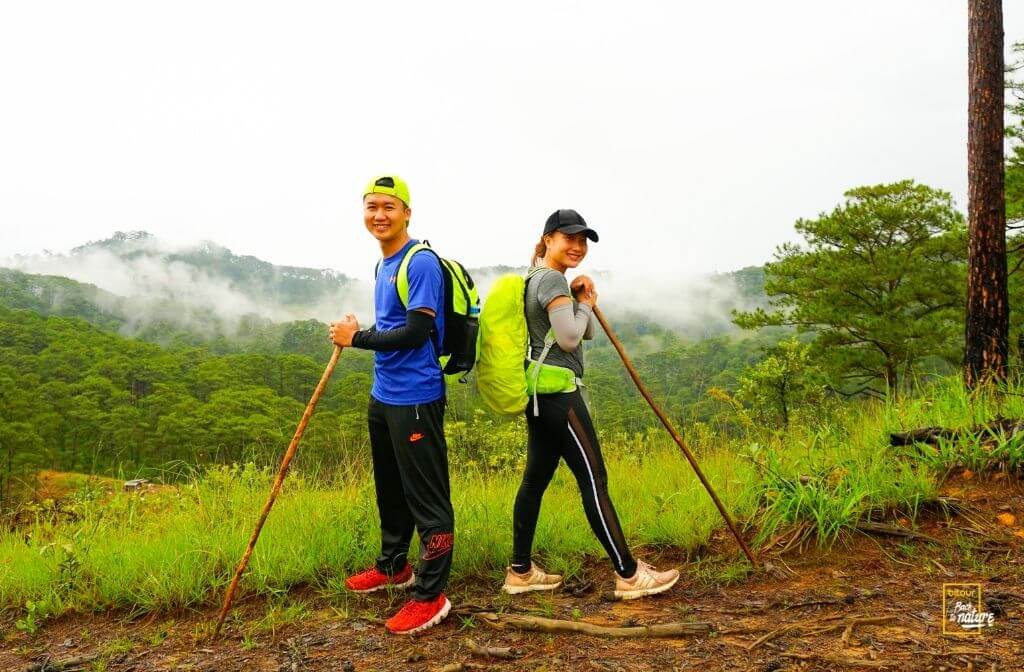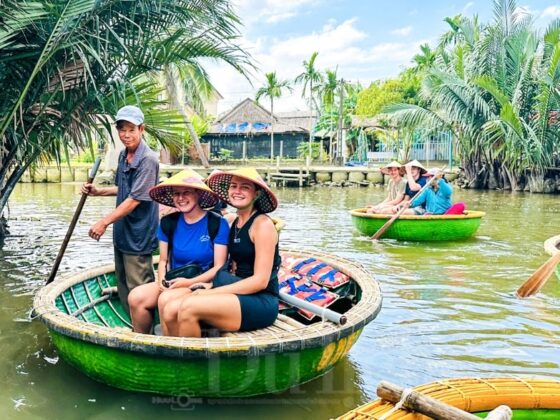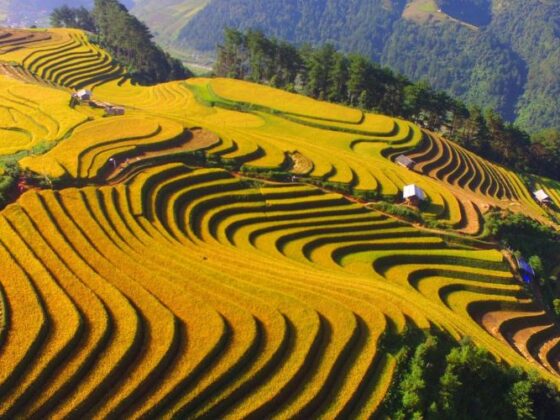Table of Contents Show
In a world filled with GPS watches, smart trackers, and ultralight titanium gadgets, it’s easy to forget the simple tools that got explorers through the wilderness long before technology did. But in Vietnam — where mountains still whisper with old stories and trails cut through villages untouched by time — many hikers and guides still trust traditional Vietnam hiking gear that’s been proven over generations. Some things, it turns out, never go out of style.
Read more interesting posts here:
- Discover Ha Giang Off the Beaten Path: The La Chi Culture Beyond Sapa
- Beyond the Postcard: Unforgettable Local Experiences Vietnam
- Trail Stories: How the Vietnam Hiking Community Is Redefining Adventure
Why the bamboo stick is essential Vietnam hiking gear

Before carbon-fiber poles and shock-absorbing handles, there was bamboo — lightweight, strong, and found on almost every mountain trail in Vietnam. Many local trekkers still craft their own bamboo walking sticks, cutting and curing them before a hike to create a reliable piece of Vietnam hiking gear.
Unlike modern poles, bamboo absorbs shock naturally and doubles as a tent pole, cooking stand, or even a tool for crossing streams. I still remember my guide in Sapa carving one for me from a roadside grove — it weighed almost nothing, yet lasted through a week of rain and rock. It’s a symbol of resourcefulness — the essence of Vietnamese outdoor culture.
Woven sandals as durable Vietnam hiking gear

Long before imported hiking boots arrived, Vietnamese farmers, porters, and soldiers crossed mountains wearing woven sandals — handmade from tire rubber, rope, or bamboo fiber. Known locally as dép cao su or dép mây tre, these sandals were designed for resilience, not luxury, making them a unique staple of Vietnam hiking gear.
In the mountains of Ha Giang and along forest trails near Lao Cai, you can still see locals wearing these durable, open-air sandals. They dry fast after river crossings, grip surprisingly well on packed soil, and allow the feet to breathe in tropical humidity. Today, some artisans in northern villages still make them by hand, selling them at rural markets or roadside stalls. For hikers seeking a touch of heritage, these sandals are more than footwear — they’re a nod to endurance and ingenuity.
The canvas backpack: a classic piece of Vietnam hiking gear
While modern packs boast advanced mesh ventilation and ergonomic harnesses, the classic canvas rucksack still has its loyal fans. Originally used by forest rangers and soldiers, these heavy-duty bags are simple, weather-resistant, and built to last, earning their place among trusted Vietnam hiking gear.
You can still find them in Hanoi’s old markets or military surplus shops — olive green, with leather straps and a rugged charm that modern packs can’t replicate. They remind us that durability doesn’t need to be high-tech; sometimes it’s just well-made.
Including navigation tools in your Vietnam hiking gear
Even with ExoTrails’ precision mapping and offline GPS, I always keep a compass and paper map in my pack. There’s something grounding about plotting your route manually — understanding contours, river crossings, and elevation by hand—making these items essential Vietnam hiking gear for safety.
Many seasoned Vietnamese guides rely on both: the digital compass on the ExoTrails app for direction and laminated topographic maps for regions like Pu Luong or Bidoup. It’s not about rejecting technology — it’s about respecting tradition and ensuring redundancy in the wild.
The metal canteen as reliable Vietnam hiking gear

Before hydration packs, the metal canteen ruled the trail. Simple, dented, and reliable, it’s still common among older trekkers and army veterans who appreciate its versatility as a piece of functional Vietnam hiking gear. You can boil water directly in it, use it to heat soup, or cool it in a mountain stream. Many local markets sell vintage-style canteens modeled after the old army issue — a true symbol of adventure that refuses to retire.
The parang: a traditional tool in Vietnam hiking gear
From cutting bamboo to clearing camp spots, the parang — or dao phay in Vietnam — remains a staple for guides and seasoned hikers. Hand-forged by village blacksmiths, these tools are part of daily life in rural areas and serve as indispensable Vietnam hiking gear for clearing paths. On the trail, it’s more than a blade; it’s a piece of craftsmanship and tradition passed from hand to hand.
Blending old wisdom with modern Vietnam hiking gear

Technology may have reshaped how we explore, but the spirit of the trail remains timeless. The best hikers know that while smart watches and apps guide us, the old ways still ground us. So next time you’re packing for a trek, slip a little tradition into your kit — a bamboo stick, a metal canteen, maybe even a pair of woven sandals. Not just as backup items, but as a connection to the generations who used this Vietnam hiking gear to explore before us. Because the wild doesn’t care what’s new — it honors what works.
Conclusion
While modern technology offers convenience and comfort, the enduring popularity of traditional tools highlights the resourcefulness embedded in the culture of exploration. Incorporating these classic items into your kit not only serves practical purposes but also deepens your connection to the land and its history. Ultimately, the best approach to adventure is often a blend of the new and the old, respecting the wisdom of the past while embracing the innovations of the present.
Join our vibrant community on Facebook to share your trekking stories and tips, and don’t forget to like the ExoTrails fanpage for the latest updates and exclusive offers!
Frequently Asked Questions (FAQs)
1. Where can I buy traditional Vietnam hiking gear like bamboo sticks or woven sandals?
You can find these items in local markets in mountainous regions like Sapa and Ha Giang, or in military surplus stores in major cities like Hanoi.
2. Are traditional sandals safe to use as Vietnam hiking gear for difficult treks?
While locals use them effectively on all terrains, they offer less ankle support than modern boots, so they are best suited for experienced hikers or lighter trails.
3. Why do guides still carry a parang as part of their Vietnam hiking gear?
The parang is a versatile tool essential for clearing overgrown vegetation, preparing bamboo for cooking, and setting up camp in dense jungle environments.










